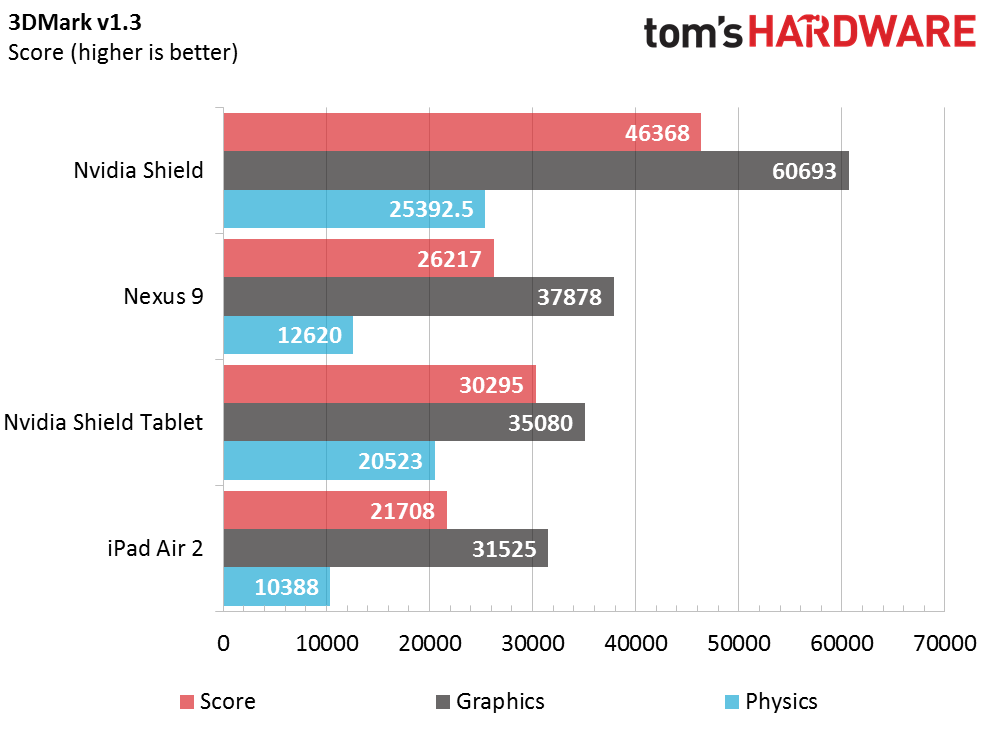Nvidia Shield Android TV Console Review
Today we take a look at the latest addition to Nvidia's Shield line of gaming devices. No mobility here, this new Shield is for the living room!
Why you can trust Tom's Hardware
GPU Core Benchmarks
3DMark
One of several benchmarking products from Futuremark, 3D Mark’s Ice Storm test measures GPU performance on Android devices using OpenGL ES 2.0. Using the company’s in-house engine, the two results we get out of the Ice Storm benchmark are Graphics, which looks at GPU performance via 720p tests, and Physics, which runs a stress test on the CPU.
It’s not very surprising that the newest device on the list would take the lead. The Tegra X1-based Shield performed better than both the Tegra K-powered Nexus 9 and its predecessor, the Shield Tablet, while the Apple iPad Air 2 and its exclusive A8X fall into fourth place.
Basemark X 1.1
Recently liberated from Rightware, Basemark X is an aggressive graphics benchmark that’s based on the Unity 4.0 gaming engine. Using two scenarios, Dunes and Hangar, the tests push the target system by using heavy game-like graphics with an emphasis on rendering, lighting and post processing.
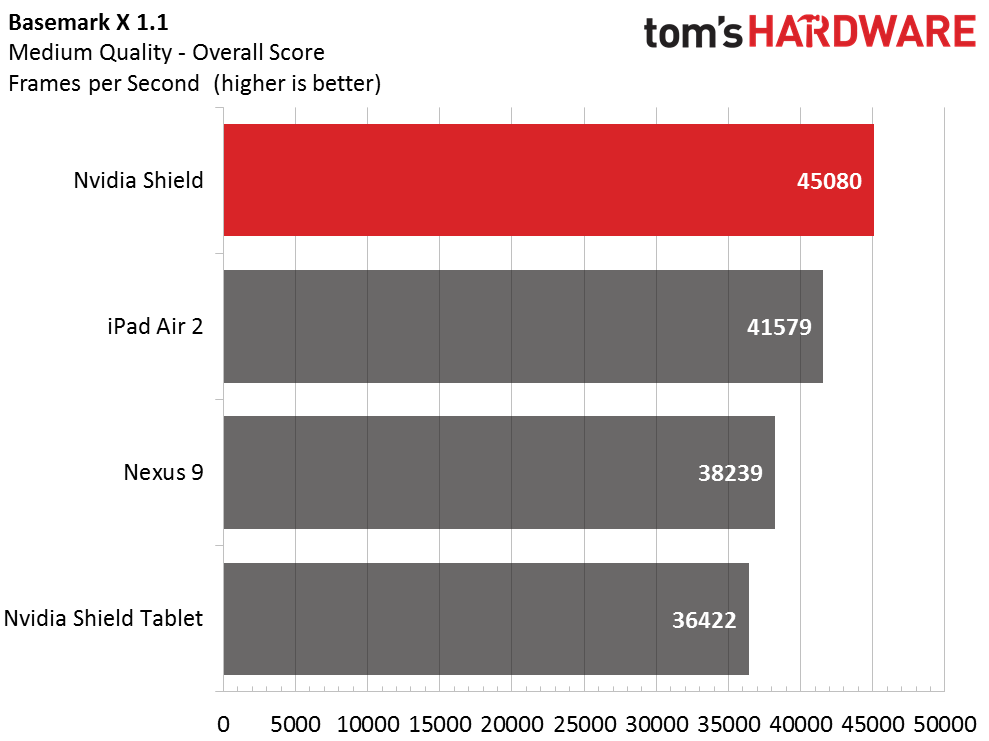
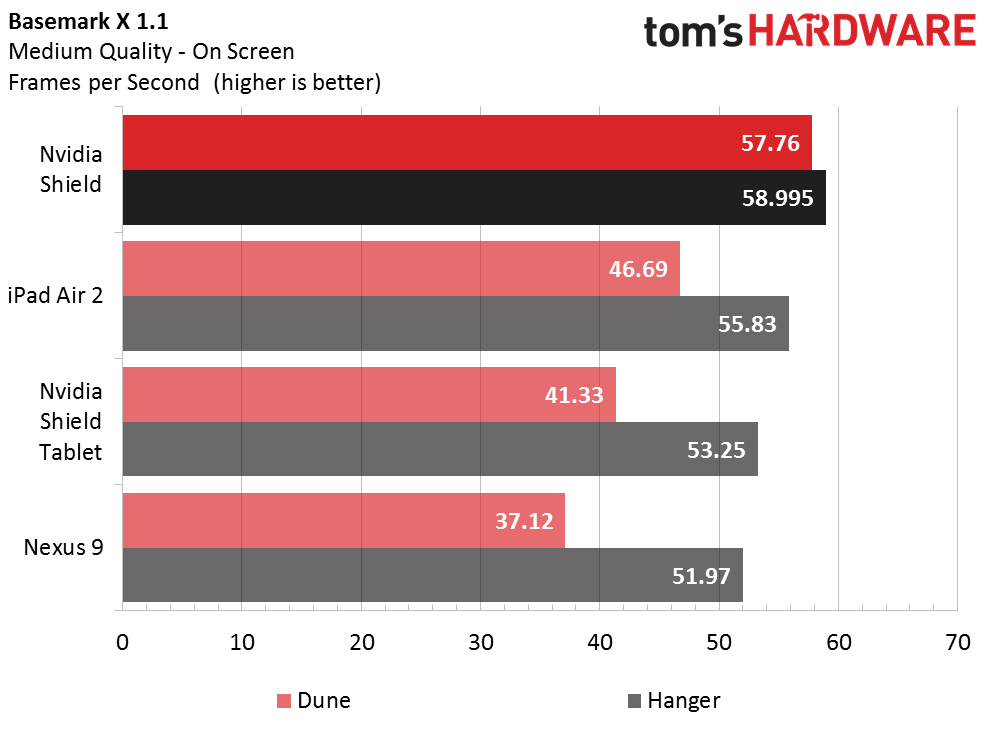
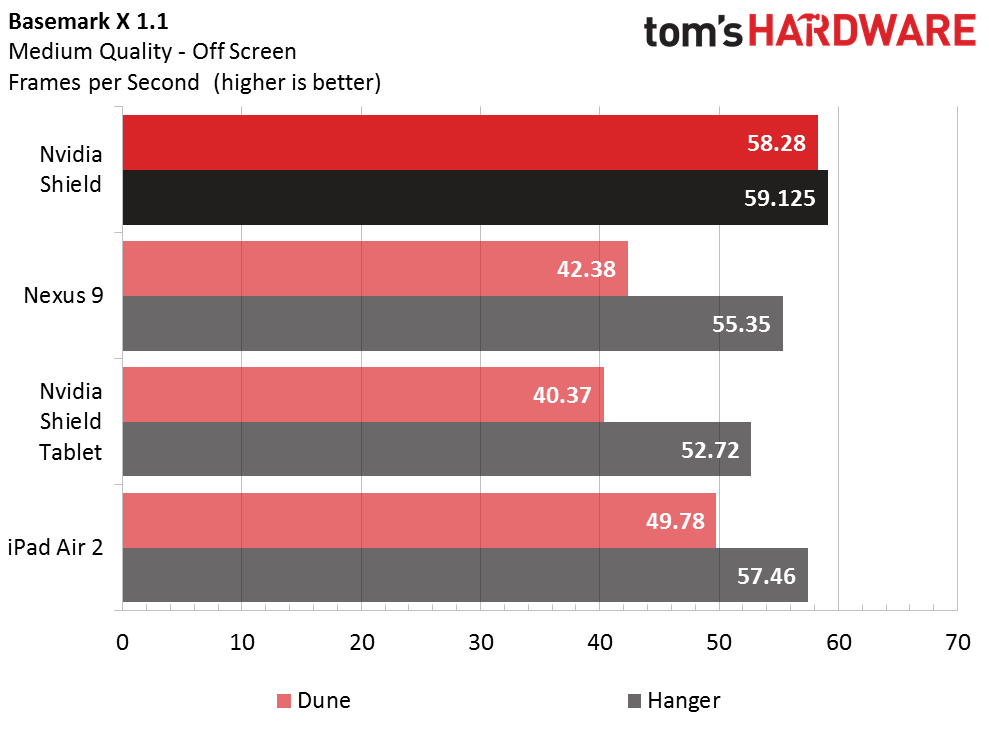
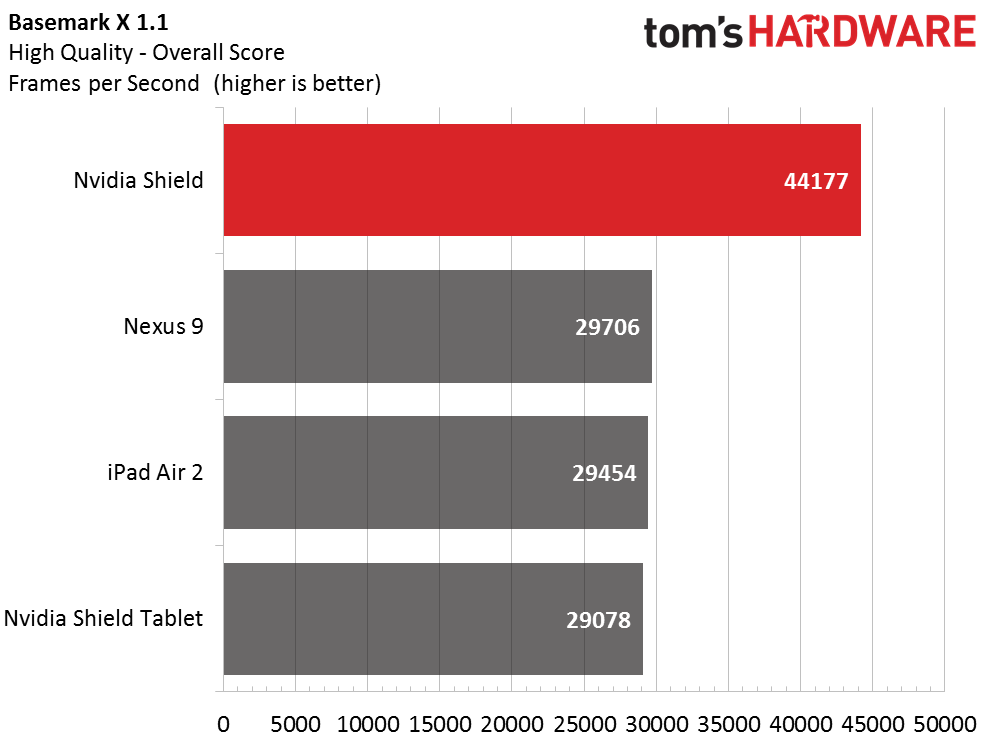
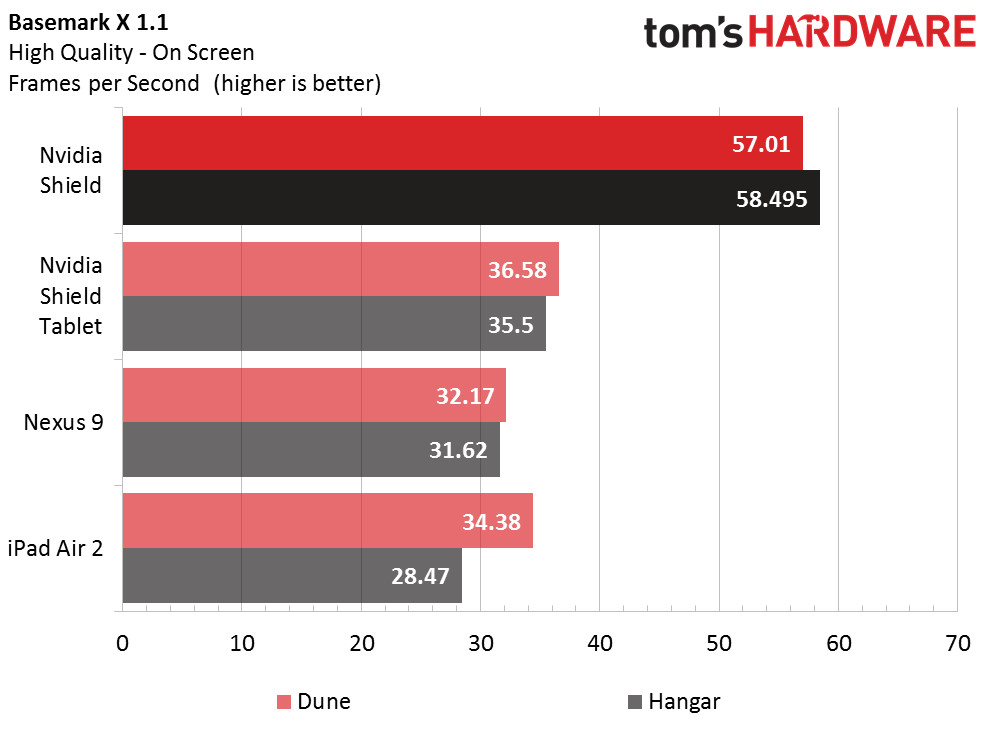
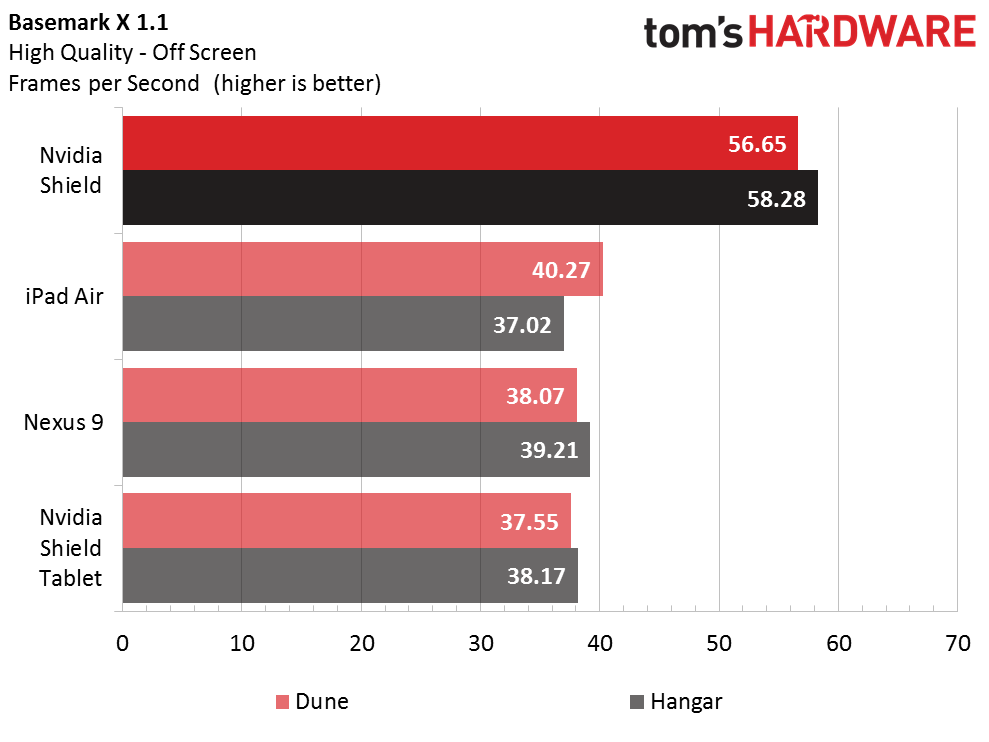
Looking at the overall results for both the medium and high quality testing, when it comes to performance at this level of processing, we can see that Nvidia needed a game changer. For this test, the Shield Tablet was pretty much pacing along with the competition, but with the new Shield and the Tegra X1, things are looking pretty bright for Nvidia. We’ve also seen this kind of leap before when the Tegra-K was first released in the Shield Tablet.
GFXBench 3.0 Corporate: High Level
One of the more comprehensive tests around, Kishonti’s GFXBench 3.0 GPU benchmark produces a collection of test results that look at high-level and low-level processes, both in onscreen and offscreen modes. High level tests include the Manhattan and T-Rex scenarios, with the former scene using OpenGL 3.0 to render a night time event in the middle of a lit city, and the latter is a daytime joyride escape from a dinosaur with quick shifting jungle scenes via OpenGL 2.0.
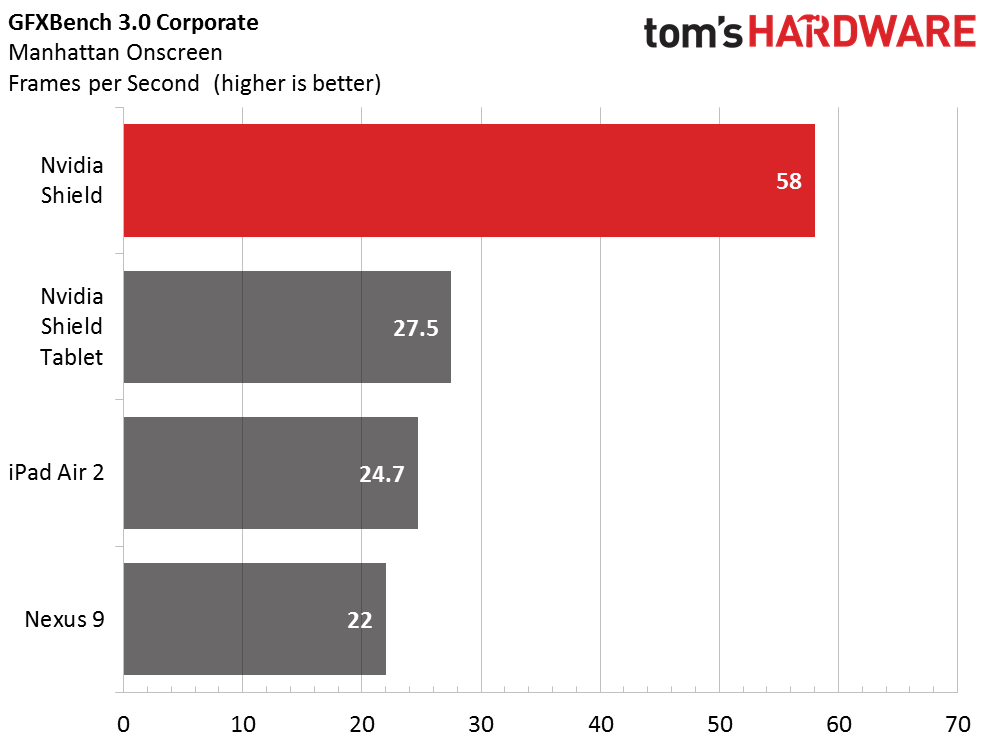
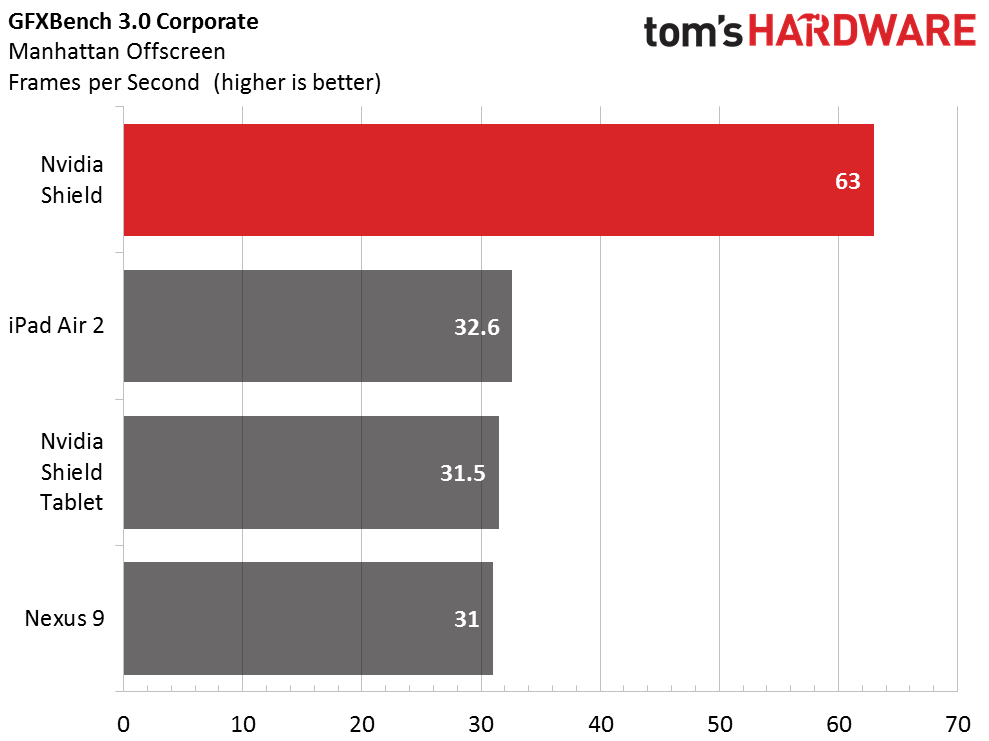
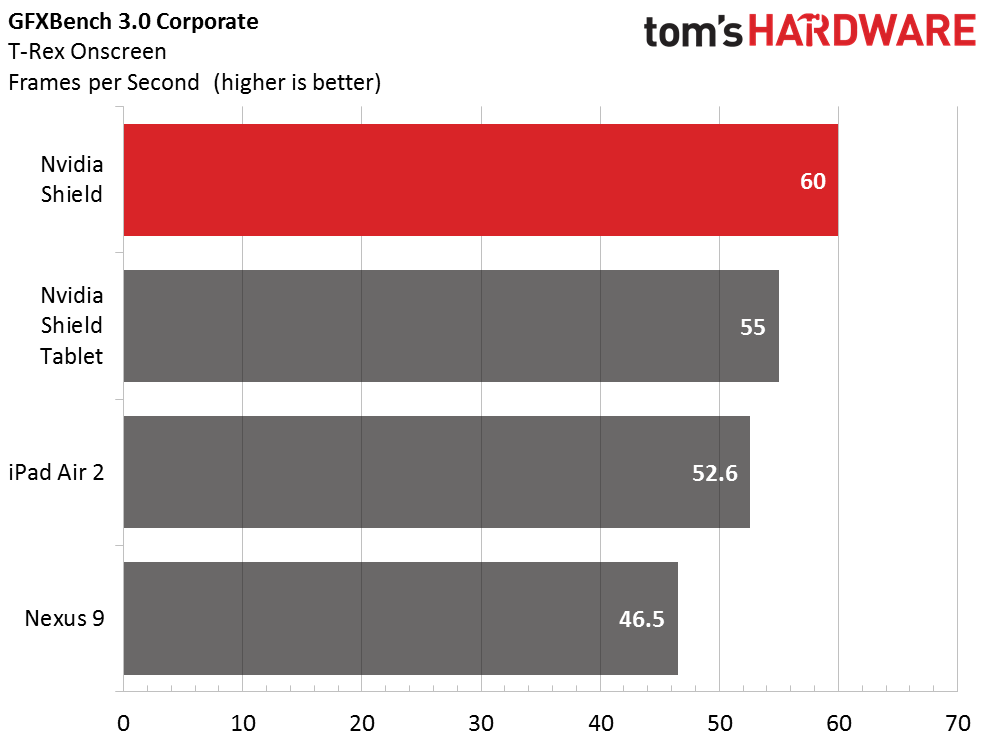

T-Rex is one of my favorite benchmarks, something that I don’t mind running and watching, over and over again. We definitely see the Shield shine as the action is happening on screen. What was more impressive were the results we got for the Manhattan test. We definitely see the Nvidia Shield ready to tackle OpenGL 3.0. Looks-wise, what we saw on the display was great, especially the lighting, but more importantly, the numbers from Manhattan speak for themselves.
GFXBench 3.0 Corporate: Low Level
GFX 3.0’s low-level benchmarks focus on a GPU’s subsystems by testing shader compute performance on the arithmetic logic unit (ALU), alpha blending for texture rendering, a driver overhead test to see how the CPU responds to draw calls and state changes, and two degrees of render quality. Lastly, the fill rate test measures the rate it takes to render four compressed textures.
Get Tom's Hardware's best news and in-depth reviews, straight to your inbox.
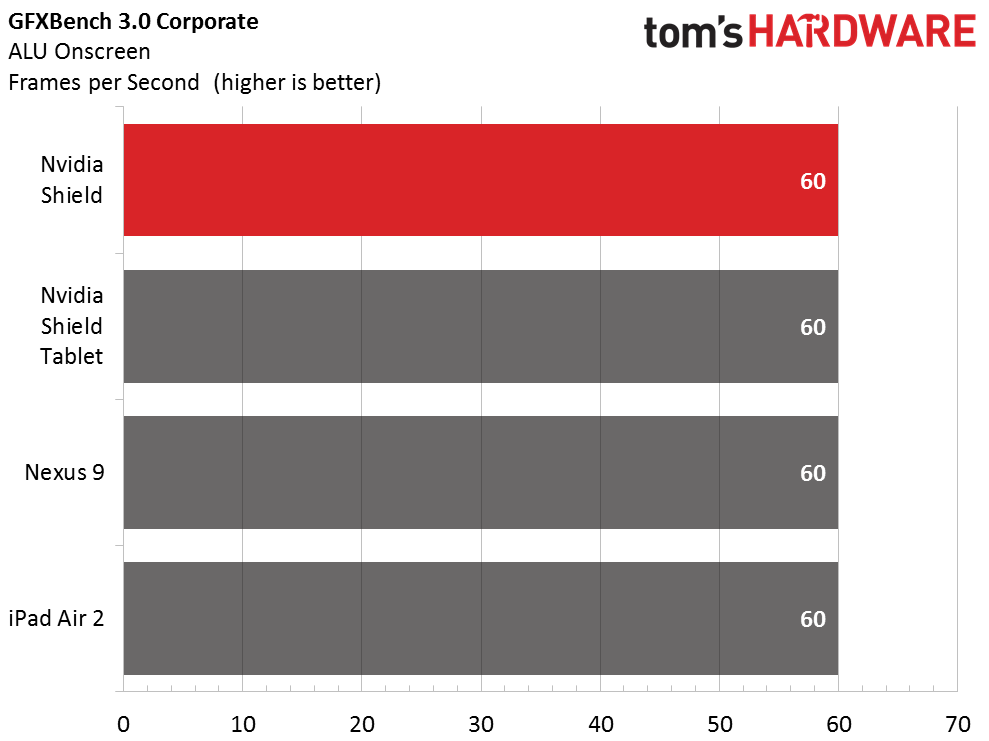
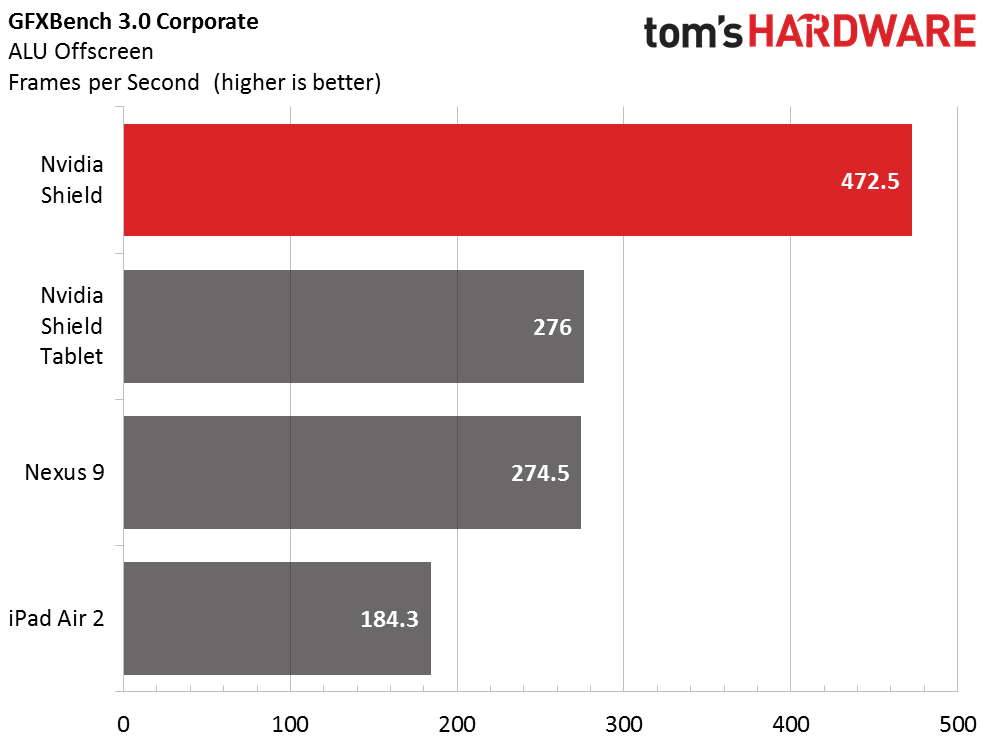
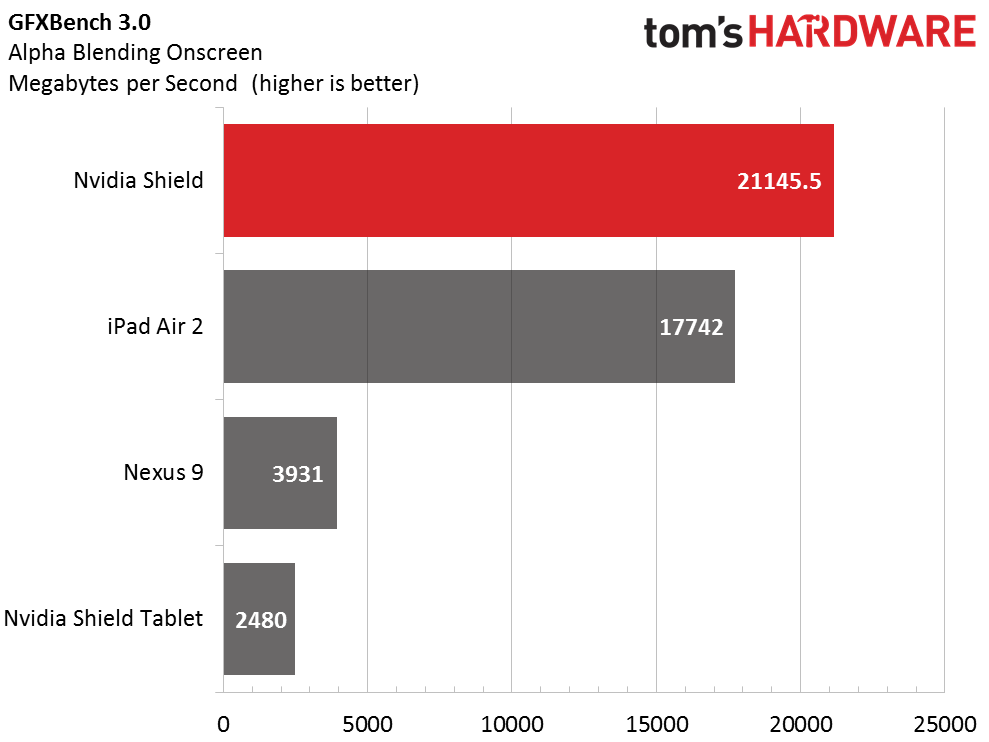
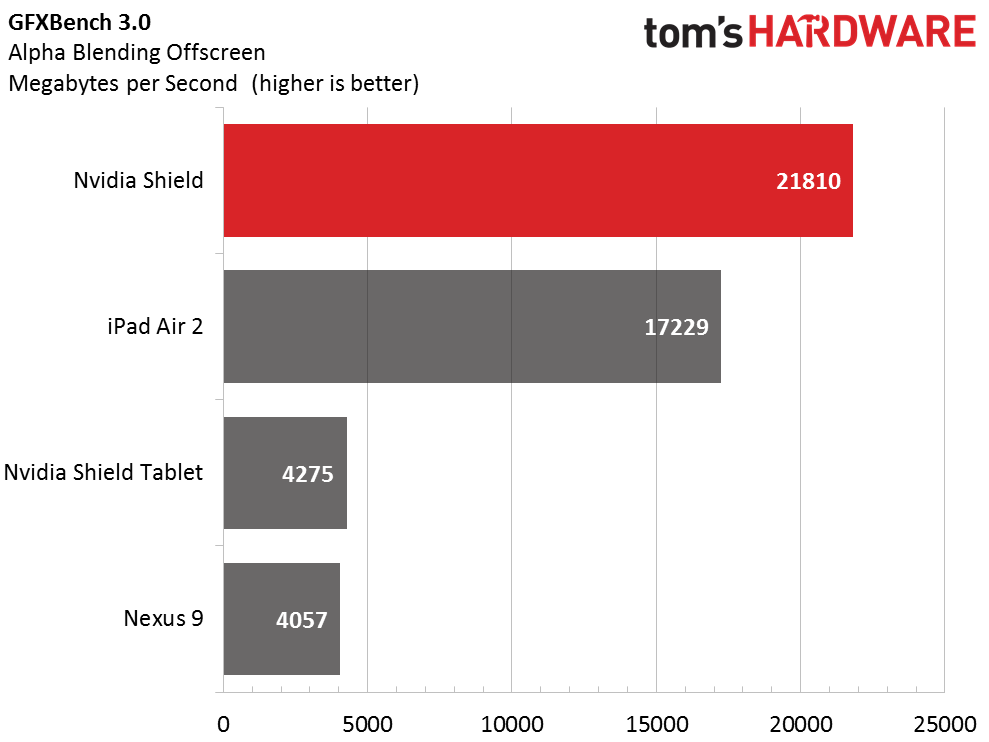
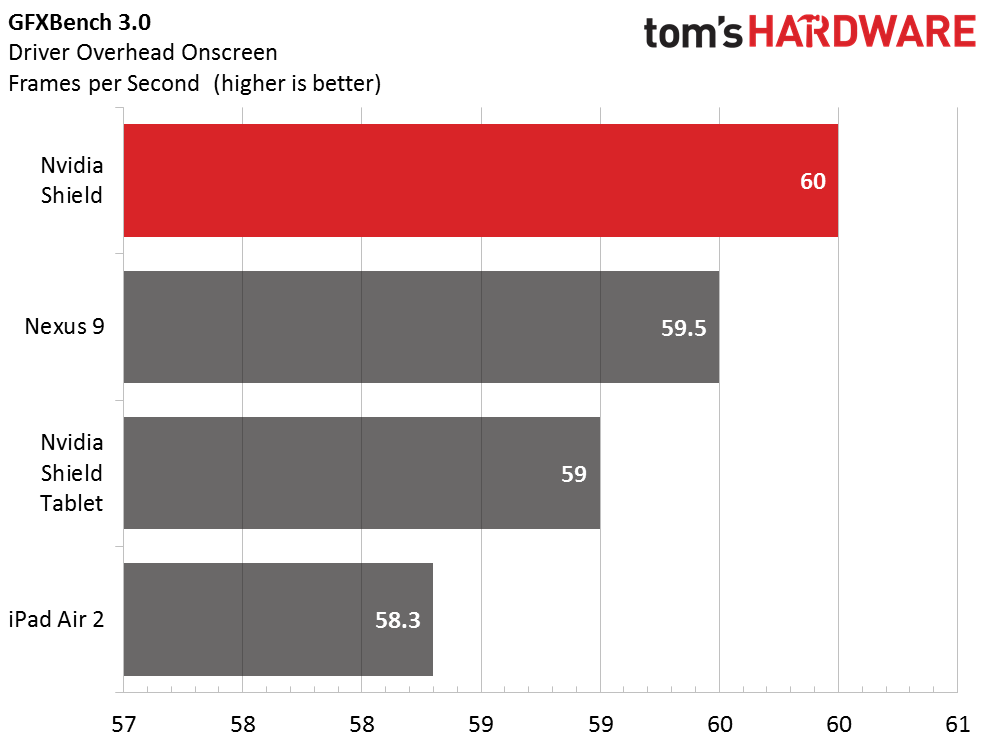
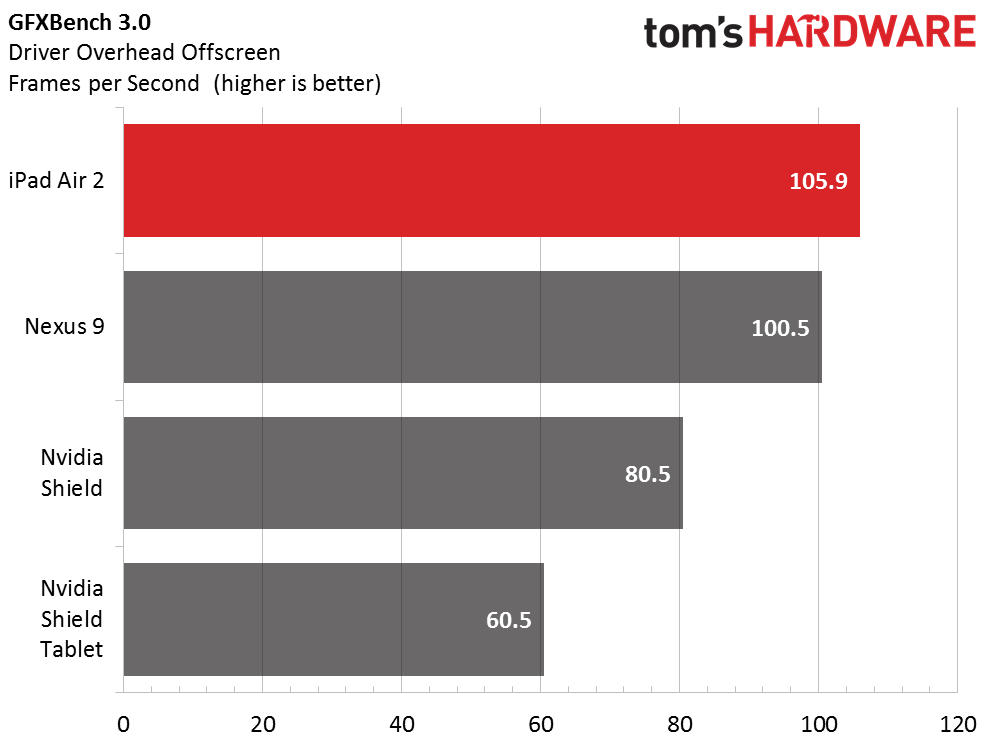
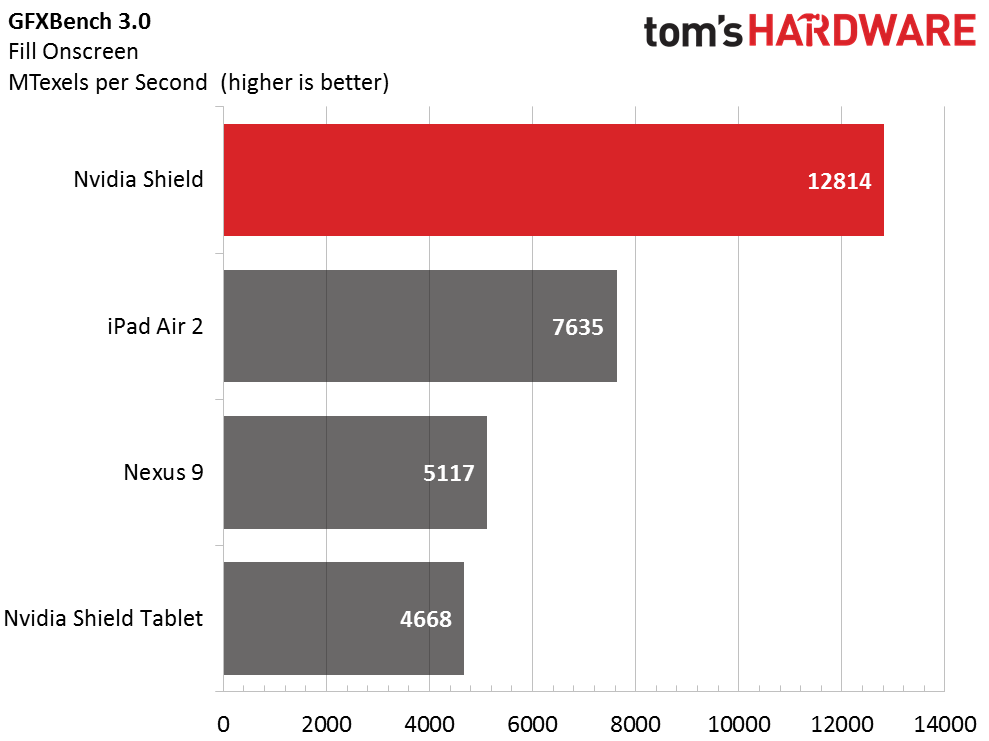
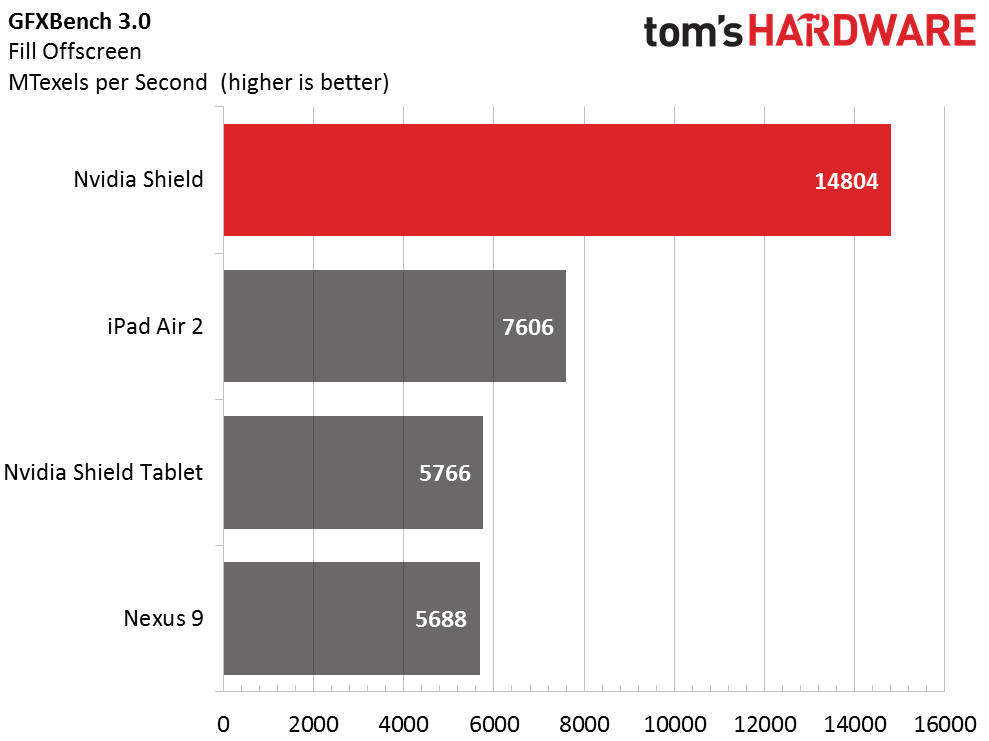
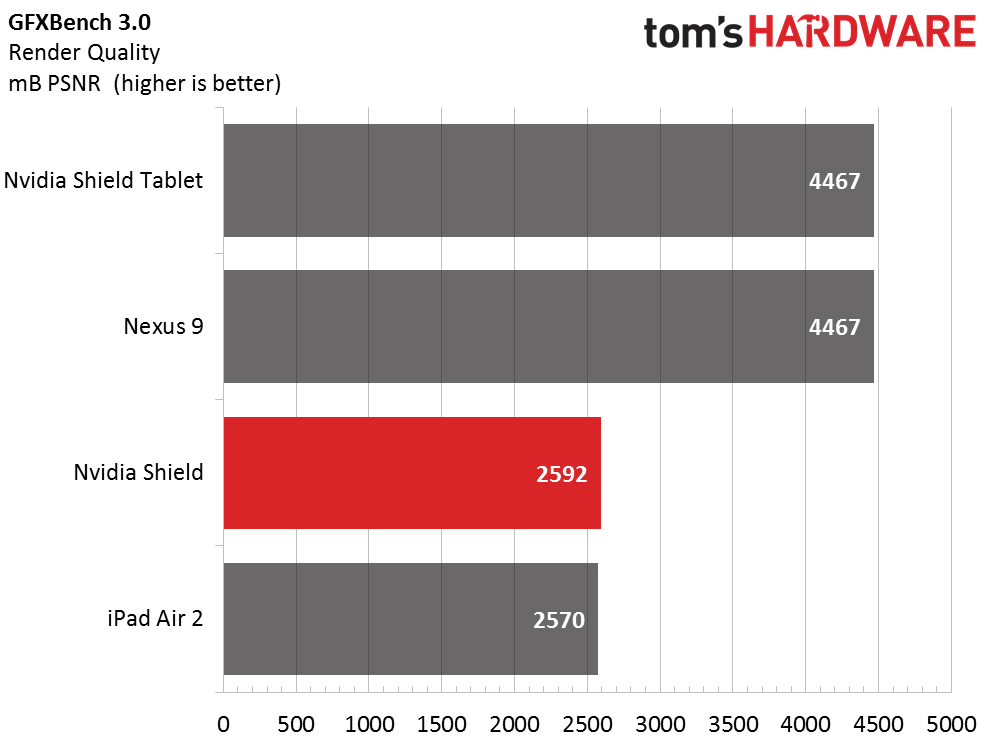
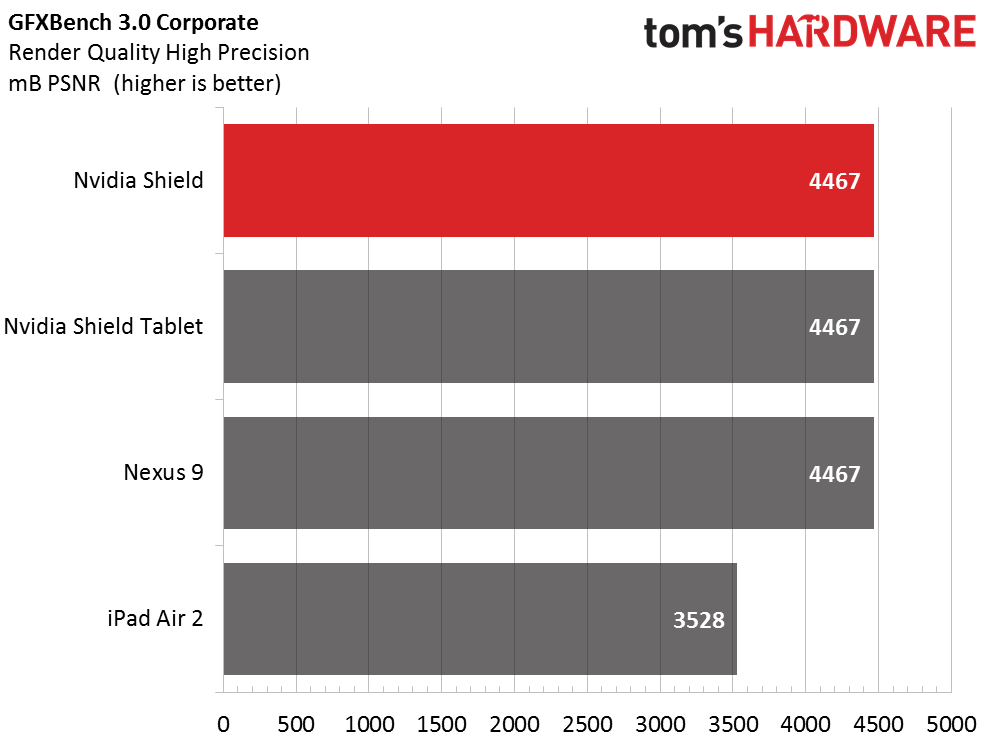
The low-level benchmarks are interesting. Maybe it’s a case of the whole being greater than the sum of all the parts. In most of these benchmarks, the Shield did pretty well, while in others it was just a face in the crowd. Alpha Rendering and Fill are the two highlights in this set of tests. Again, we see the older Shield Tablet sitting in the shadow of the Apple iPad Air 2, which enforces what I wrote earlier about how Nvidia needed something serious in the SoC space. That something is the Tegra X1.
-
jasonelmore keep the shield devices coming nvidia! that gpu score.. can't wait to see it in their tablet next month.Reply -
Per Wigren FINALLY a review that tests GameStream. I can't believe how there can be so many reviews out there and just about no one that bothers to try this rather major feature, considering it's produced by Nvidia and comes with a gamepad... Thank you!Reply
The result is rather discouraging, however. Did you use it at 1920x1080 at 60 FPS? Was the game set to that resolution on the PC as well? -
Valld Nice review, just a few mistakes in the specifications:Reply
1. There are moving parts inside - the cooling fan, clearly visible on the photo
2. Bluetooth version is 4.1/BLE, not 2.1
3. Micro SD card slot supports cards up to 128Gb, not 2Tb -
Eggz Interesting! People with HTPCs will be looking for something given that Windows 10 won't have Windows Media Center any more.Reply
I think that creates an open market, and I'm curious to see whether Ceton will hire some programmers to come up with a piece of software that supports all of the WMC functionality, and whether they or anyone else will solve the OnDemand functionality issue that's now exclusive to cable boxes. -
Zepid What a shit review. No codec information, no playback benchmarks for local media. No information as to if you can mount USB storage to be readable natively by Android apps (as in can I plug in a USB HDD and see it without doing anything in say... VLC). Because Android TV doesn't support this by default without a root or custom ROM, I assume Nvidia has this feature enabled but ZERO REVIEWERS have bothered mentioning it.Reply -
clonazepam Where's the gamepad review? Stream Dark Souls I/II to the thing and really hammer on the d-pad with weapon swaps / item use, and report back. Thanks! :)Reply
"Git gud casul." -
Emanuel Elmo I made this correction before and nobody seems to have corrected it.Reply
The $299.99 model of the shield comes with a 500GB HDD and NOT a 200GB HDD.
I will say this again that it can be confirmed off of the Nvidia website. -
thrus Something that bugged me early in the article since your internet was only 23Mbps you couldn't reliably stream 4k from Netflix, but the gigabit port make HD work fine. If the port was all that mattered it far exceeded the recommended 25Mbps for 4k as well. The gig port had nothing to do with your streaming, heck an old 100Mbps port would be 4 fold the required throughput for 4k. keep the specs in the specs section and don't try to shoehorn them in where they are irreverent.Reply -
deppman I have the 500GB Shield. The Talos Principle can be set to 1080p rendering and it looks and performs very well. I'm not sure why it defaults to 720p rendering. The Wi-Fi results in less lags and hiccups than the Shield Tablet, so game streaming is better nearly glitch-free IF your network isn't busy. Video streaming is flawless, and even Chromecast improves. Also, Google just released 600 more TV apps, so selection is greatly improved. Now if I could only install a browser.Reply
